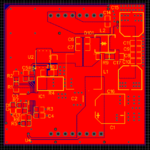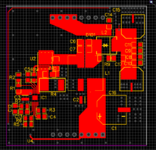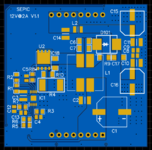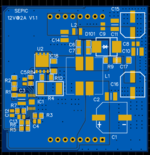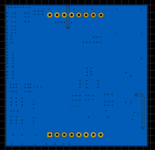seridj_mse
Member level 2

- Joined
- Jan 18, 2021
- Messages
- 53
- Helped
- 0
- Reputation
- 0
- Reaction score
- 2
- Trophy points
- 8
- Activity points
- 311
HI,
We have tested our equipment SEPIC DC DC input:9-30V output : 12V/24W (PCB 2LAYER) for CISPR 16 radiated emission limits. The emission result is attached. I have trouble shooted the problem element.
for pics i know its about quartz 50Mhz but the probleme is with renonant , i tried with RC , and RDC snubber but i cant solve probleme


We have tested our equipment SEPIC DC DC input:9-30V output : 12V/24W (PCB 2LAYER) for CISPR 16 radiated emission limits. The emission result is attached. I have trouble shooted the problem element.
for pics i know its about quartz 50Mhz but the probleme is with renonant , i tried with RC , and RDC snubber but i cant solve probleme





